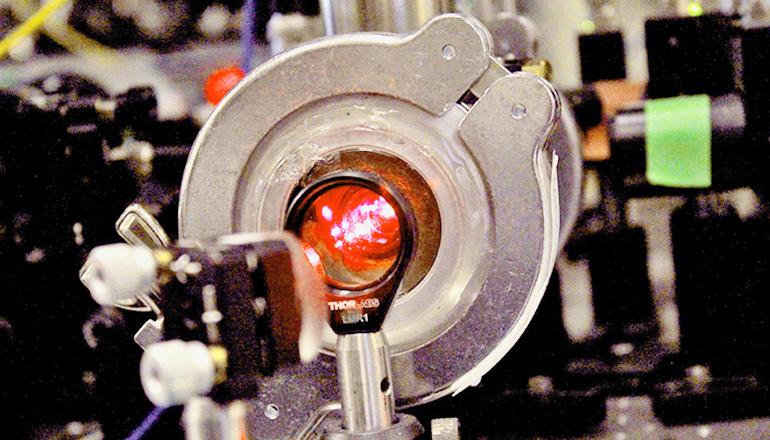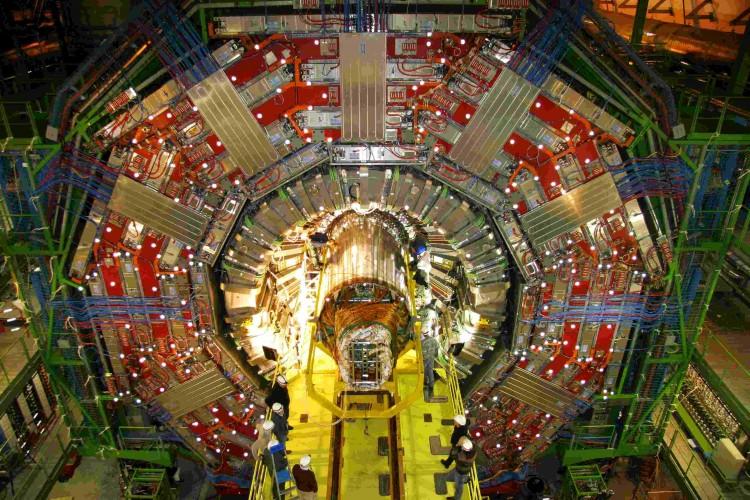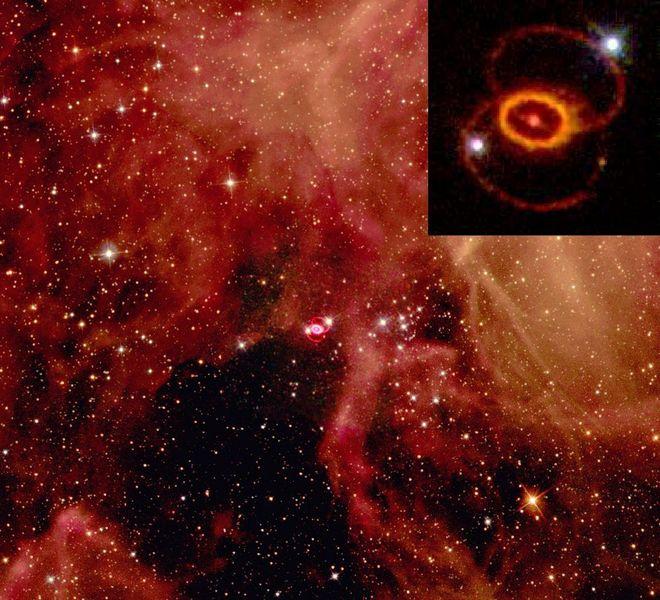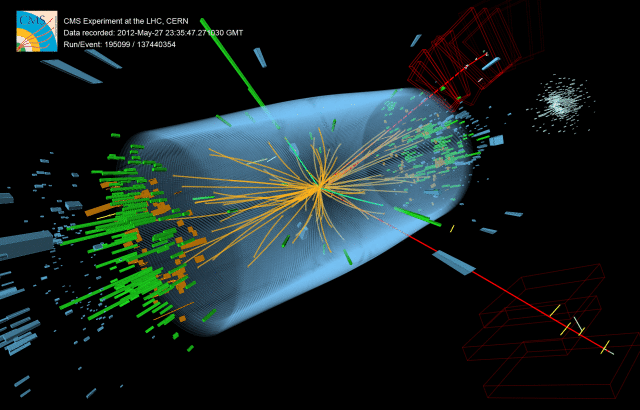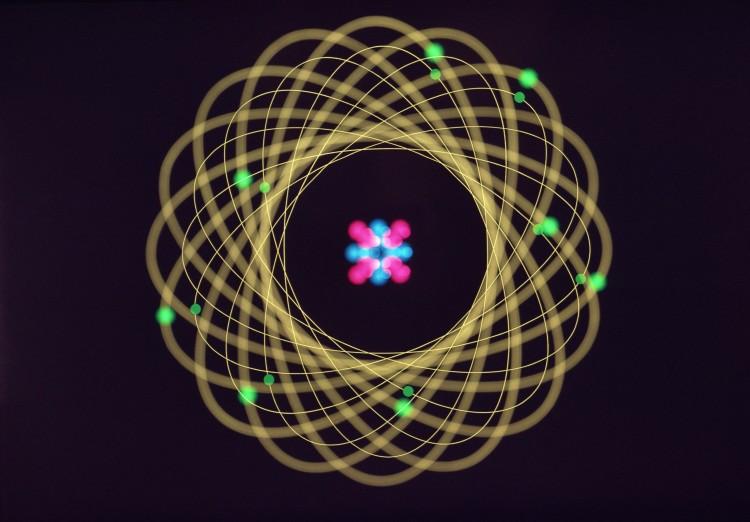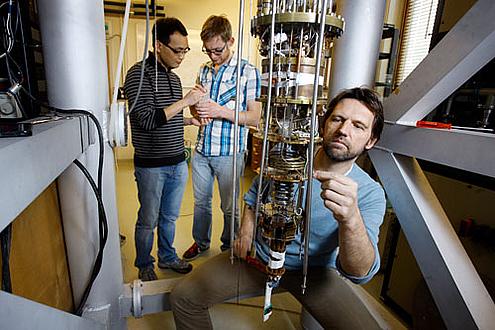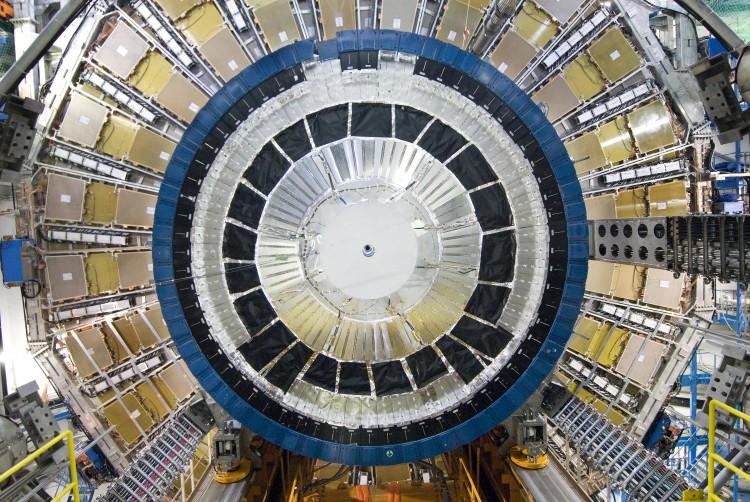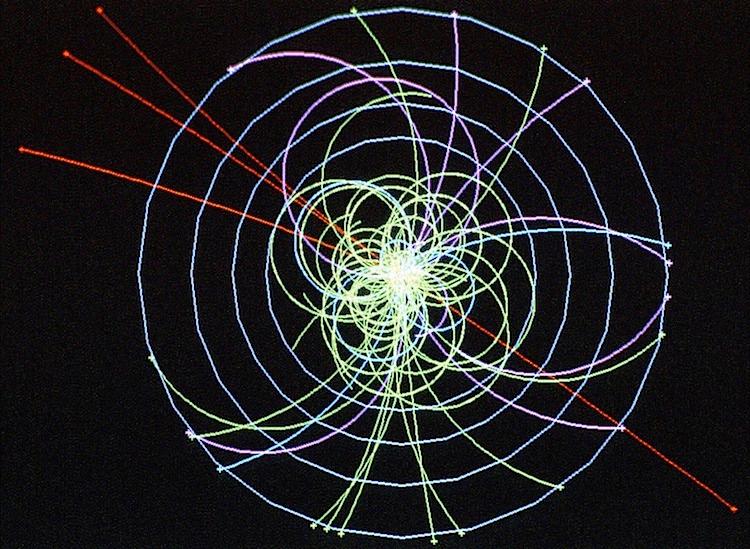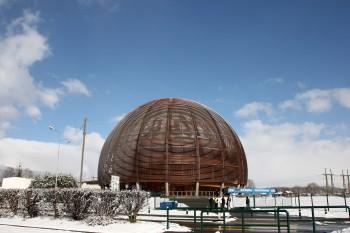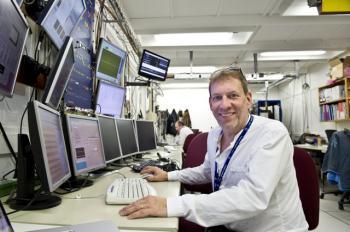Focus
particle physics
‘Fifth Force of Nature’ May Help Study Deep Earth
The four known forces in physics—gravity, electromagnetism, and the strong and weak nuclear forces—might soon be joined by a fifth, known as the long-range spin-spin interaction.
|
12 Matter Particles Form Basis of Nature
The number of matter particles or fermions contained in the standard model of particle physics has been confirmed as 12.
|
Hidden Influence Inequality: New Approach to Quantum Theory
Trying to explain quantum “spooky action at a distance” using any kind of signal puts Einstein’s relativity against our concept of a smooth spacetime.
|
Scalar Particle Causes Supernovae and Global Warming?
The mystery behind why some stars explode may be solved by a theoretical particle that could also help us predict climate change on Earth.
|
Science in Quotes: The Naming of Quark
“In 1963, when I assigned the name ‘quark’ to the fundamental constituents of the nucleon, I had the sound first, without the spelling, which could have been ‘kwork’.”
|
CERN Says New Particle Is Probably Higgs Boson
The European Organization for Nuclear Research (CERN) has shown a particle with a mass which matches that of the hypothesized Higgs boson or so-called god particle.
|
Neutrons May Travel to Mirror Dimensions
Italian physicists have hypothesized the existence of parallel matter to explain an experimental anomaly that cannot be interpreted using standard physics.
|
Majorana Fermions Glimpsed in Cold Nanowires?
Majorana particles may have been detected for the first time since their theoretical existence was first proposed in the 1930s, with potential applications for quantum computing.
|
Jumping Antimatter Reveals ‘Anti-Atomic Fingerprint’ (Video)
The properties of antimatter have been further elucidated with microwave spectroscopy as part of the ALPHA experiment at CERN.
|
Error May Have Caused CERN’s Faster-Than-Light Neutrinos Discovery
The laboratories that discovered neutrinos traveling faster than light now backtrack and state that they have found two possible glitches in their system that could account for this anomalous result.
|
New Particle Discovered at Large Hadron Collider
Scientists analyzing data from the ATLAS experiment found a new particle—the Chi-b(3P). (ATLAS Experiment © 2007 CERN)
|
CERN Moves Closer to Finding Elusive God Particle
New research from the European Organization for Nuclear Research (CERN) shows significant progress in the hunt for the subatomic Higgs boson, yet its short-lived existence or non-existence still cannot be conclusively proven.
|
Scientists Trap Antimatter for 1,000 Seconds and Counting
The European Organization for Nuclear Research (CERN) has managed to trap anti-hydrogen atoms for at least 16 minutes and believes this relatively stable form of antimatter will allow further studies of these rare and mysterious particles.
|
Antimatter Trapped by CERN Scientists
Scientists at CERN were able to create and capture antimatter, according to a statement released this week.
|
‘Fifth Force of Nature’ May Help Study Deep Earth
The four known forces in physics—gravity, electromagnetism, and the strong and weak nuclear forces—might soon be joined by a fifth, known as the long-range spin-spin interaction.
|
12 Matter Particles Form Basis of Nature
The number of matter particles or fermions contained in the standard model of particle physics has been confirmed as 12.
|
Hidden Influence Inequality: New Approach to Quantum Theory
Trying to explain quantum “spooky action at a distance” using any kind of signal puts Einstein’s relativity against our concept of a smooth spacetime.
|
Scalar Particle Causes Supernovae and Global Warming?
The mystery behind why some stars explode may be solved by a theoretical particle that could also help us predict climate change on Earth.
|
Science in Quotes: The Naming of Quark
“In 1963, when I assigned the name ‘quark’ to the fundamental constituents of the nucleon, I had the sound first, without the spelling, which could have been ‘kwork’.”
|
CERN Says New Particle Is Probably Higgs Boson
The European Organization for Nuclear Research (CERN) has shown a particle with a mass which matches that of the hypothesized Higgs boson or so-called god particle.
|
Neutrons May Travel to Mirror Dimensions
Italian physicists have hypothesized the existence of parallel matter to explain an experimental anomaly that cannot be interpreted using standard physics.
|
Majorana Fermions Glimpsed in Cold Nanowires?
Majorana particles may have been detected for the first time since their theoretical existence was first proposed in the 1930s, with potential applications for quantum computing.
|
Jumping Antimatter Reveals ‘Anti-Atomic Fingerprint’ (Video)
The properties of antimatter have been further elucidated with microwave spectroscopy as part of the ALPHA experiment at CERN.
|
Error May Have Caused CERN’s Faster-Than-Light Neutrinos Discovery
The laboratories that discovered neutrinos traveling faster than light now backtrack and state that they have found two possible glitches in their system that could account for this anomalous result.
|
New Particle Discovered at Large Hadron Collider
Scientists analyzing data from the ATLAS experiment found a new particle—the Chi-b(3P). (ATLAS Experiment © 2007 CERN)
|
CERN Moves Closer to Finding Elusive God Particle
New research from the European Organization for Nuclear Research (CERN) shows significant progress in the hunt for the subatomic Higgs boson, yet its short-lived existence or non-existence still cannot be conclusively proven.
|
Scientists Trap Antimatter for 1,000 Seconds and Counting
The European Organization for Nuclear Research (CERN) has managed to trap anti-hydrogen atoms for at least 16 minutes and believes this relatively stable form of antimatter will allow further studies of these rare and mysterious particles.
|
Antimatter Trapped by CERN Scientists
Scientists at CERN were able to create and capture antimatter, according to a statement released this week.
|

